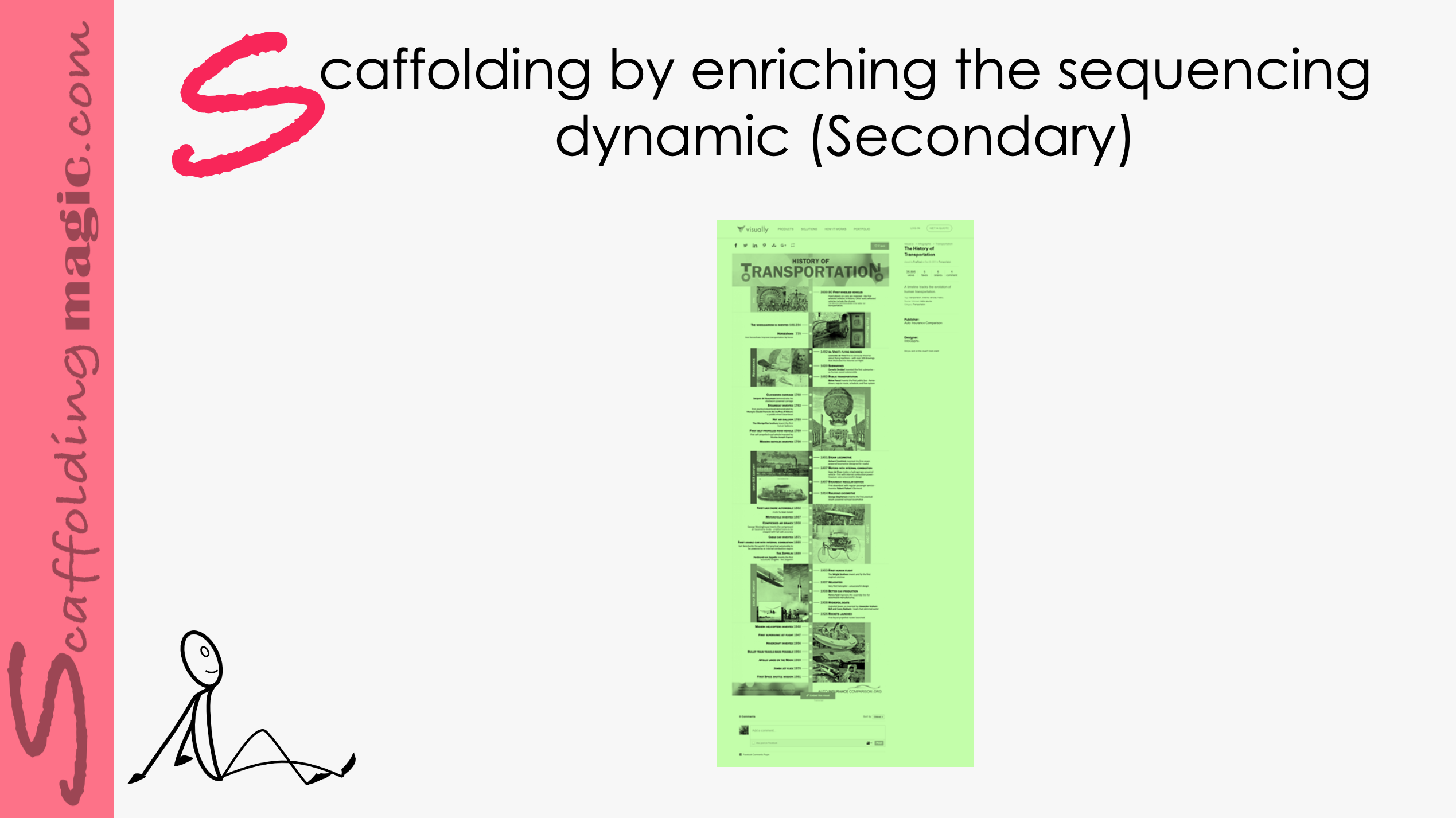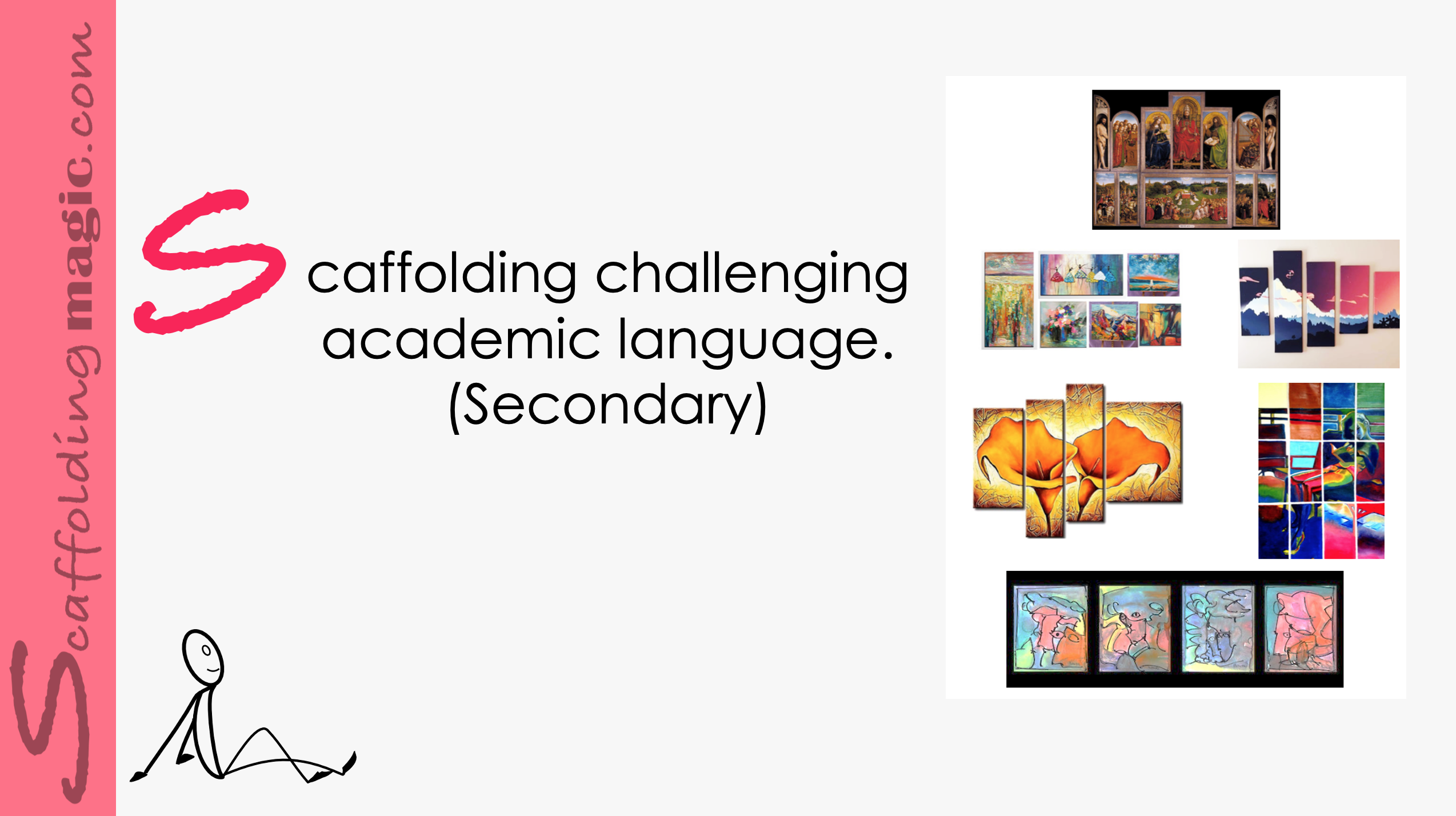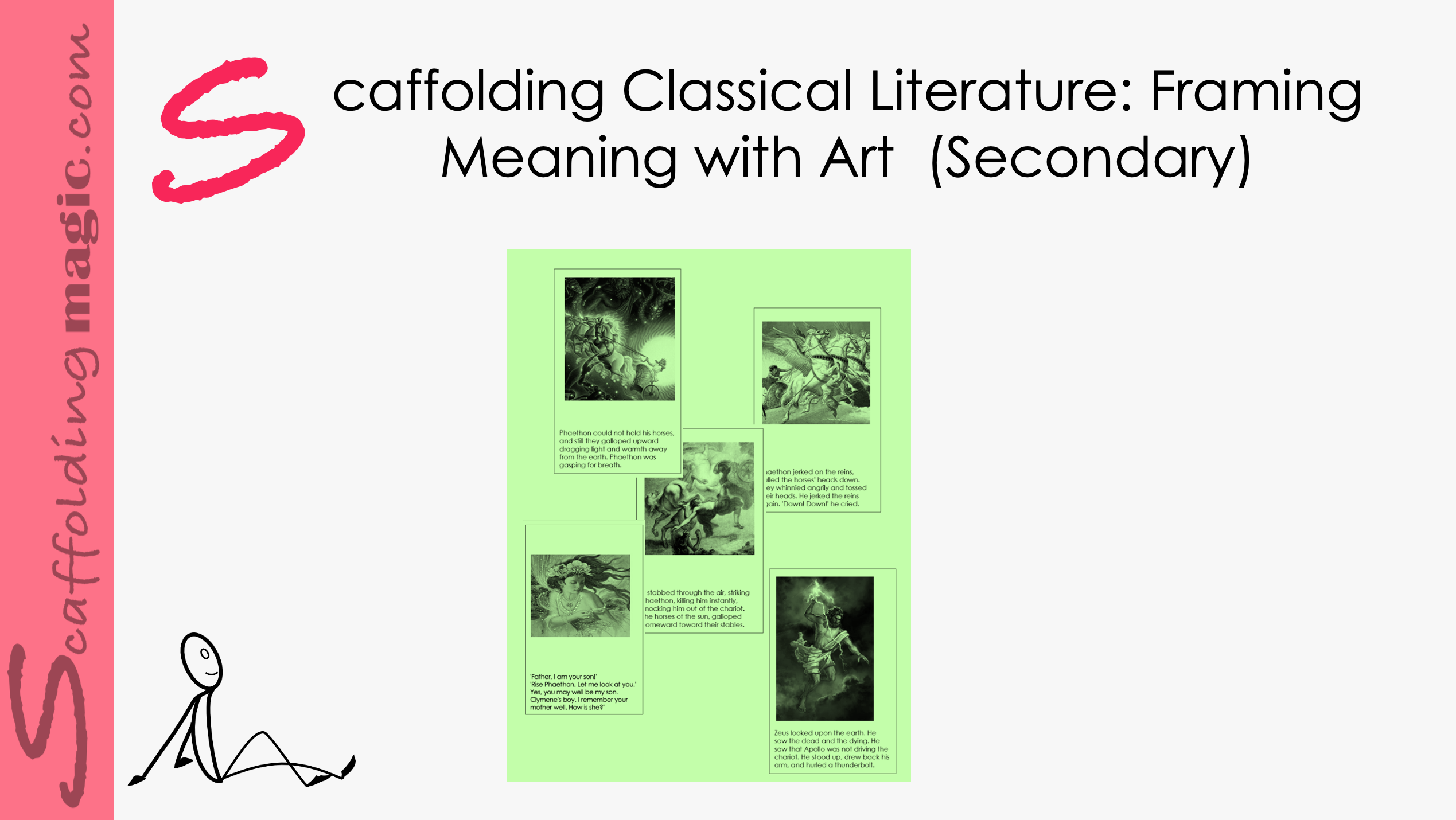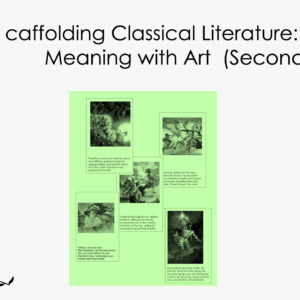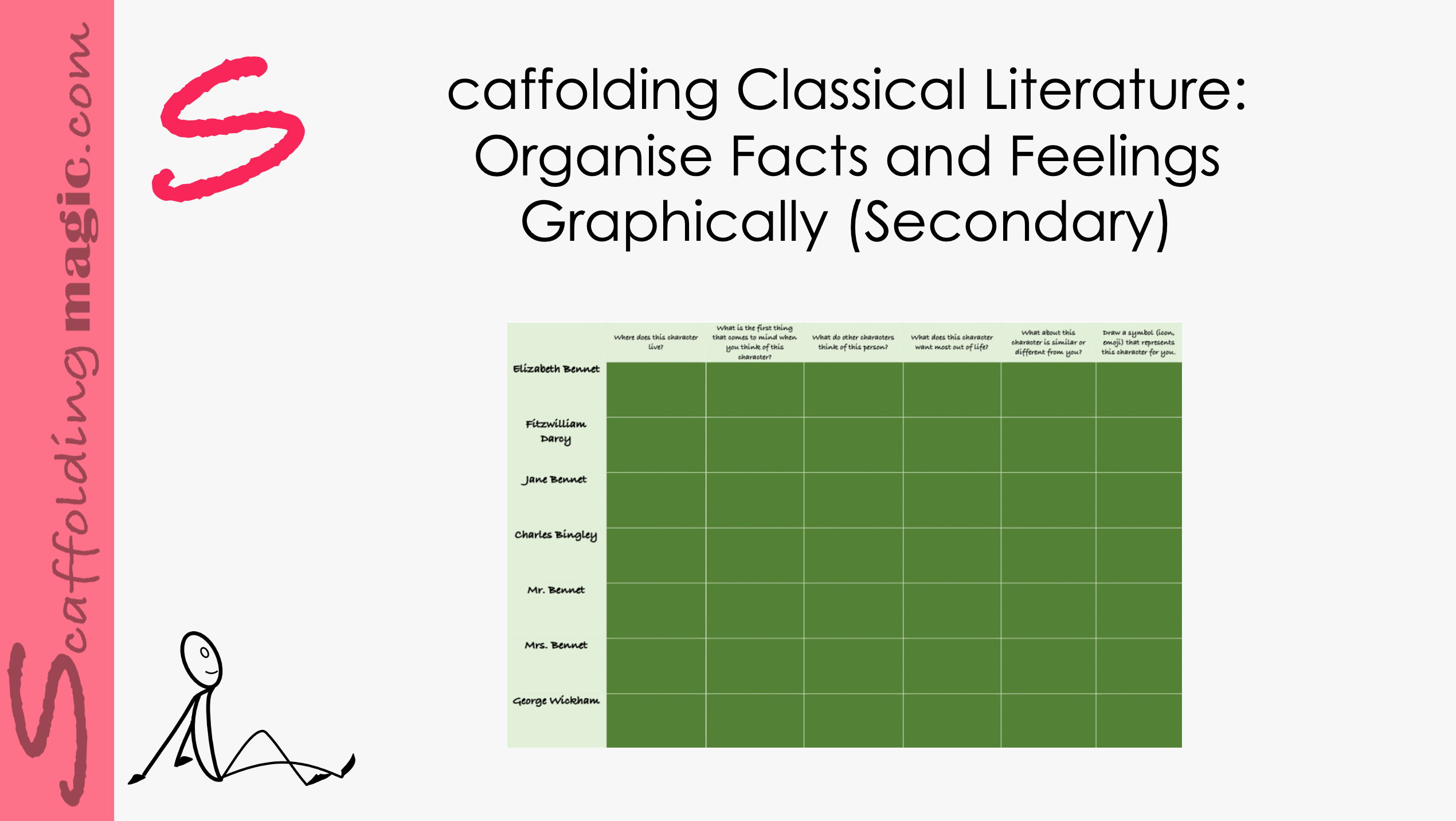Sequencing is a concept that needs to be repeated throughout the education process. We need to intentionally give our students the opportunities to be able to recognise and express sequences, and we need to provide the phrases they can use to clarify the ordering of events. It might be motivating to know that studies show that students are able to recall information more accurately if they´ve been schooled in sequencing.
Scaffolding by Enriching the Sequencing Dynamic (Secondary)
$5.00
Sequencing is a concept that needs to be repeated throughout the education process. We need to intentionally give our students the opportunities to be able to recognise and express sequences, and we need to provide the phrases they can use to clarify the ordering of events. It might be motivating to know that studies show that students are able to recall information more accurately if they’ve been schooled in sequencing.
Related products
-
Secondary ScaffoldsQuick View
Scaffolding Challenging Terms and Academic Language
$5.00 Add to cartRated 0 out of 5 - Quick View
-
Secondary ScaffoldsQuick View
Scaffolding Activity for Classic Literature 2: Framing Meaning with Art
$5.00 Add to cartRated 0 out of 5 -
Secondary ScaffoldsQuick View
Scaffolding Activity for Classic Literature 4: Organise Facts and Feelings Graphically
$5.00 Add to cartRated 0 out of 5
Scaffolding Challenging Terms and Academic Language
Developing new academic language can be challenging for students in any language. If the terms or vocabulary are intrinsic to a successful interaction of the task, we need to make a bit of extra effort to give our students support so they feel more confident about their understanding and usage of the language. Scaffolding techniques can help students bridge gaps so that they can engage in challenging units with more ease.
This scaffold integrates images and linguistics giving students support in different learning styles. They learn the parameters of a term experientially, using vocabulary that is provided, discerning differences in images and paying close attention to details in the information given. Critical thinking, multiple possibilities for recognising truths, and verbalisation will engage your students in a powerful collaborative activity towards new knowledge.
Developing new academic language can be challenging for students in any language. If the terms or vocabulary are intrinsic to a successful interaction of the task, we need to make a bit of extra effort to give our students support so they feel more confident about their understanding and usage of the language. Scaffolding techniques can help students bridge gaps so that they can engage in challenging units with more ease.
This scaffold integrates images and linguistics giving students support in different learning styles. They learn the parameters of a term experientially, using vocabulary that is provided, discerning differences in images and paying close attention to details in the information given. Critical thinking, multiple possibilities for recognising truths, and verbalisation will engage your students in a powerful collaborative activity towards new knowledge.
Scaffolding Human Rights (Secondary)
March 25th is the International Day of Remembrance of the Victims of Slavery and the Transatlantic Slave Trade. As educators, it’s vital for us to pass on bits of history so that even our youngest learners can internalise the injustice of what happened, in order to create more hope for the human population of today. Most history texts are written in depersonalised structures (passive tense with no recognisable narrator’s voice), and so are divorced from a tangible context that we usually need to connect to the information. Let’s add humanity and feeling to history so that our students see the connection to what happened in the past, their reality, and what they can do to make positive changes in the future.
March 25th is the International Day of Remembrance of the Victims of Slavery and the Transatlantic Slave Trade. As educators, it’s vital for us to pass on bits of history so that even our youngest learners can internalise the injustice of what happened, in order to create more hope for the human population of today. Most history texts are written in depersonalised structures (passive tense with no recognisible narrator’s voice), and so are divorced from a tangible context that we usually need to connect to the information. Let’s add humanity and feeling to history so that our students see the connection to what happened in the past, their reality, and what they can do to make positive changes in the future.
Scaffolding Activity for Classic Literature 2: Framing Meaning with Art
Students are given artistic renditions of the story by documented artists with captions underneath in authentic language. They put the images in order according to what makes sense to them with regard to images and language. In the best practices of the Ethic of Excellence, in groups, they then exchange their artwork and analyse each other’s renditions.
Students are given artistic renditions of the story by documented artists with captions underneath in authentic language. They put the images in order according to what makes sense to them with regard to images and language. In the best practices of the Ethic of Excellence, in groups, they then exchange their artwork and analyse each other’s renditions.
Scaffolding Activity for Classic Literature 4: Organise Facts and Feelings Graphically
Here is a scaffold that will help your students keep track of the many characters in the story. Aside from the facts and family trees which can help enormously in following the plot, the graph encourages the students to pay attention to personalities and actions so they can make connections to them and people in their own lives – a key in engaging our students.
Here is a scaffold that will help your students keep track of the many characters in the story. Aside from the facts and family trees which can help enormously in following the plot, the graph encourages the students to pay attention to personalities and actions so they can make connections to them and people in their own lives – a key in engaging our students.

